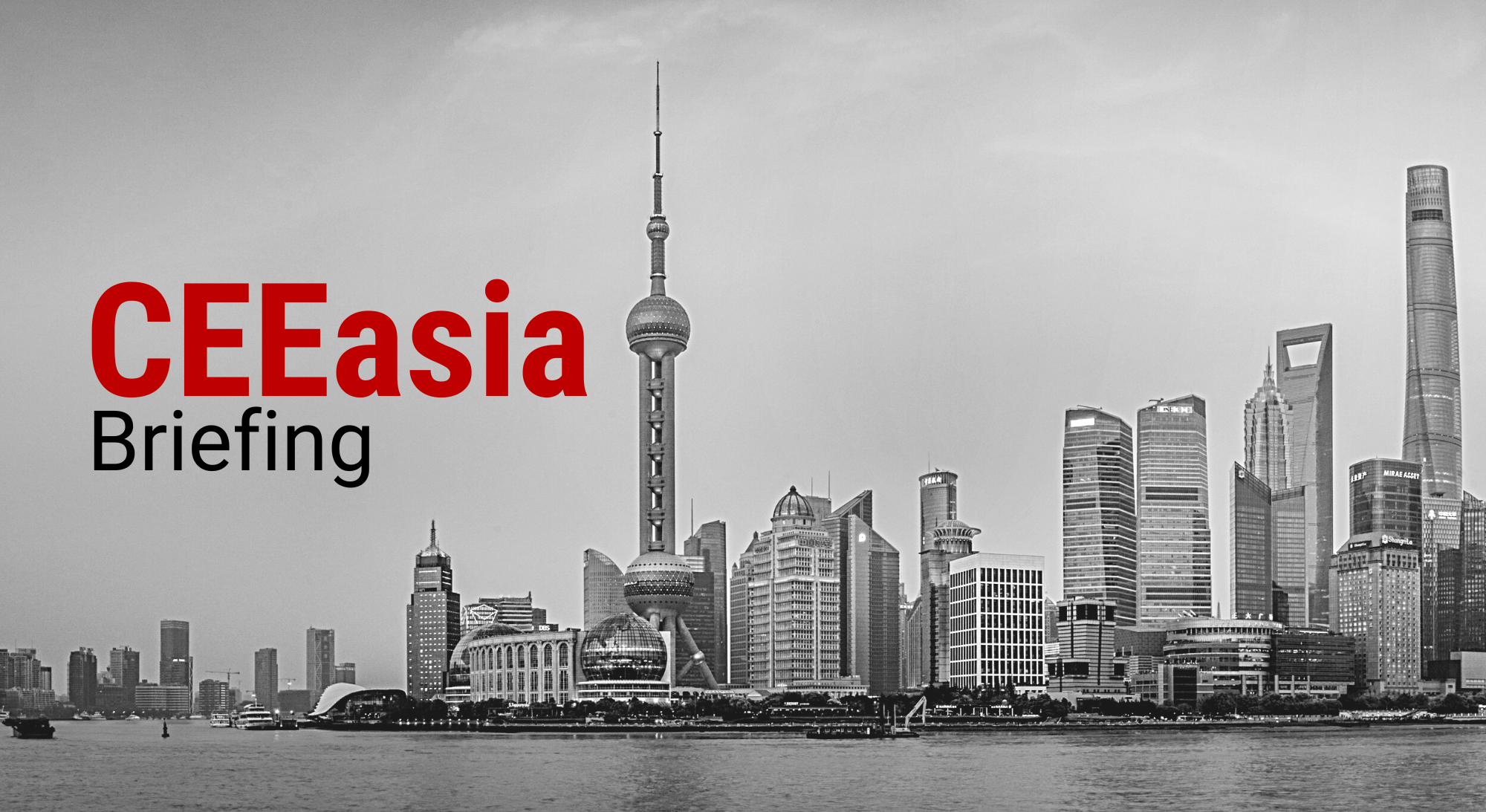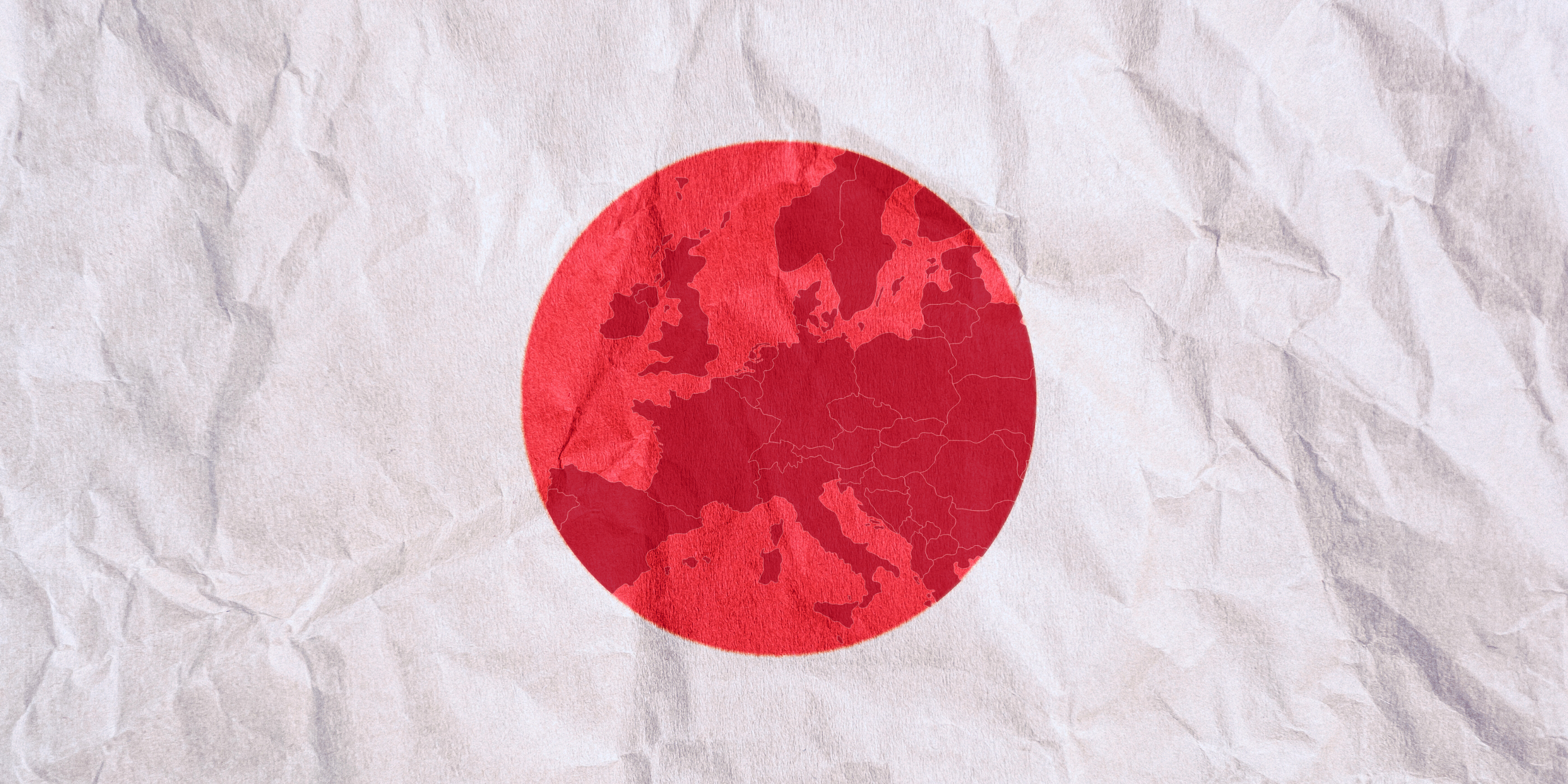Welcome to the 16th issue of the #CEEasia Briefing.
In this issue, we dissect the following topics:
- The EU adopts a new Indo-Pacific strategy
- Montenegro asks the EU for help on China loan
- Hungarian foreign minister visits Japan
- Japan aligns with the US on climate
Do you need to know more about East Asia? Don’t hesitate to shoot us a message about custom analysis tailored to your needs.
1. The EU adopts a new Indo-Pacific strategy
What’s going on? The EU has adopted a new cooperation strategy in the Indo-Pacific. The strategy is one of the main focus points in the EU’s efforts to enhance its engagement outside Europe and cooperation in various sectors, including research, technology, climate change and security. The plan has been put forward in the context of the rising number of challenges and increasing tensions in technological, political, economic, humanitarian, and security areas in the region.
Going deeper… The aims of the strategy, that represents the bloc’s own “pivot to Asia”, is to develop strong partnerships in the region, to address Beijing’s rise and related topics such as cyber activities, the reduction of economic dependence on China, as well as expansion of EU’s role in digitalization throughout Southeast Asia. Moreover, by also focusing on maritime security and extending its activities within the CRIMARIO project from the Indian Ocean into South Asia, Southeast Asia, and the South Pacific, the EU seeks to contribute to regional stability, security, and prosperity.
This means… The EU has aligned its strategy with several of its member states such as France or Germany that already published their own national Indo-Pacific strategies. The plan might reflect the shift in perception of China’s role in the international system and the challenges its activities might pose to the region’s stability, nevertheless, it is stressed that the EU is committed to cooperating with all partners in the region who share common objectives, principles, and values.
Further reading:
Politico: Europe’s strategic long-shot: More warships in the Indo-Pacific
EEAS: EU Strategy for Cooperation in the Indo-Pacific
The Hindu: European Council approves conclusions on EU’s Indo-Pacific strategy
2. Montenegro’s Loan and the EU: China in the Western Balkans
What’s going on? Montenegro asked the EU for help with repayment of a $1 billion loan it received from the Export-Import Bank of China in 2014. The loan was set to finance a segment of the Bar-Boljare motorway which links the Adriatic Sea to the country’s border with Serbia. Although the EU expressed its intention to help with financing of the remaining part of the motorway, it refrained from helping with the bailout. This leads to a real possibility of China taking control of some of the country’s assets as a collateral.
Going deeper… The loan for the project, which is widely seen as an example of the BRI-associated ‘debt trap’, was acquired under the previous government led by the long-reigning Democratic Party of Socialists. The loan was taken despite the EU’s feasibility studies warning against it. But following the recent ruling party change, the new government decided to take a more critical stance towards China, arguably due to the mounting criticism by civil society of the project’s lack of transparency, environmental degradation and negative implications for the country’s EU accession prospects.
This means… The argument that the EU wants to refrain from helping Montenegro as a deterrence for other countries to follow suit, seems unsubstantiated. Several members of the European Parliament and policy analysts therefore argue in favour of help to Montenegro, seeing it as a geopolitical opportunity to not only counter Chinese influence but also improve the EU’s image in a region increasingly dominated by anti-EU populist politicians, who are keen on sacrificing long-term developments of their respective countries for short-term profits the dubious BRI projects offer.
Further reading:
CHOICE: Why the EU Must Deal with Montenegro’s Chinese Debt
South China Morning Post: China defends its $944 million loan to Montenegro for motorway project
The Diplomat: Will Montenegro’s New Government Bring a New China Strategy?
3. Hungarian Foreign Minister visits Japan
What’s going on? Hungarian Foreign Minister Péter Szijjártó met his counterparts for talks in Tokyo at the beginning of March. Mr. Szijjártó was the first foreign minister to visit Japan this year, underlying mutual respect and friendship of the relationship between the two countries. The minister also emphasized the importance of Japanese businesses, reflecting the country’s seemingly rising interest in Hungary as a destination of its investment.
Going deeper… Indeed, based on his remarks, 23 Japanese companies have further invested in their businesses in Hungary while avoiding layoffs due to Covid-19. According to him, millions of investments in both the food and automobile industries have saved around 15,600 jobs. One of such projects is Suzuki’s plant in Esztergom, in northern Hungary, which was founded in 1991 and has produced other cars such as Subaru and Fiat. In fact, in a 2019 article written by a chairman of Suzuki, Hungary was described as the European country that the country was especially interested in, eventually describing Japanese cars as ‘‘the symbol of Hungary and the Hungarian industry’’.
This means… The meeting, as well as Japan’s economic importance for the Hungarian job market, reflects a more strategic nature of Japan for wider Europe. Indeed Hungarian minister has highlighted a need for direct cooperation between the EU and the East Asia Free Trade Area and how more interchange in this area could benefit both sides. Since the EU-Japan Economic Partnership Agreement entered into force on 1 February 2019, European firms have exported around €70bn in goods and €28bn in services to Japan every year.
Further reading:
The Japan Times: Japanese car forges friendship and trust
Daily News Hungary: Hungary benefiting significantly from cooperation with Japan, says FM Szijjártó in Tokyo
4. Japan is changing its goals in the fight against climate change
What’s going on? The two-day virtual summit of global leaders, convened by US President Joe Biden, was focused on combating climate change. Unlike its predecessor, Biden supports the reduction of greenhouse gas emissions. Biden has set a target for the US to reduce emissions by 50% compared to 2005 levels. By 2050, the United States should achieve carbon neutrality. However, as Mr. Biden noted, the US is responsible for producing less than 15% of global emissions. Japanese Prime Minister Suga Yoshihide, who attended the summit, promised to reduce Japan’s greenhouse gas emissions by up to 46% by 2030 compared to 2013 when Japanese emissions production peaked.
Going deeper… This is a significant shift from the 5th largest global emitter, as Japan’s previous goal was a 26% reduction. In addition to the 2030 targets, Japan is committed to the global 2050 carbon neutrality target. These goals come as it has become increasingly clear that Japan is lagging behind on its decarbonization. Between 1999 and 2018, the EU reduced emissions by almost 23%, while Japan reduced it by only 2.5%. Suga was under pressure from the US to increase the reduction rate to at least 50% during the summit, but refused, saying that 46% would be an achievable minimum and they would strive for more.
This means… After strong pressure from the US, Japan is joining the world’s powers to fight climate change. Probably the biggest challenge will be the transformation of the energy sector, which will also require significant financial costs. Japan has been criticized for supporting the production of electricity from fossil fuels, especially coal. It took this step after the Fukushima accident in 2011. The Japanese public’s questionable attitude towards nuclear energy and criticism of coal combustion is leading to efforts to increase the share of renewables in energy. But like in other parts of the world, representatives of energy-intensive industries have expressed their reservations or concerns while representatives of the automotive industry are calling for a gradual reduction of internal combustion engines. It is also unclear how the metallurgical industry, whose competitiveness can be significantly jeopardized, will react to the increase of goals.
Further reading:
Nikkei Asia: Japan and US pledge sharper cuts by 2030 at Biden climate summit
AP News: Japan raises emissions reduction target to 46% by 2030
Tokio Review: Japan’s Carbon Neutral Future Divided Over Climate Pricing







